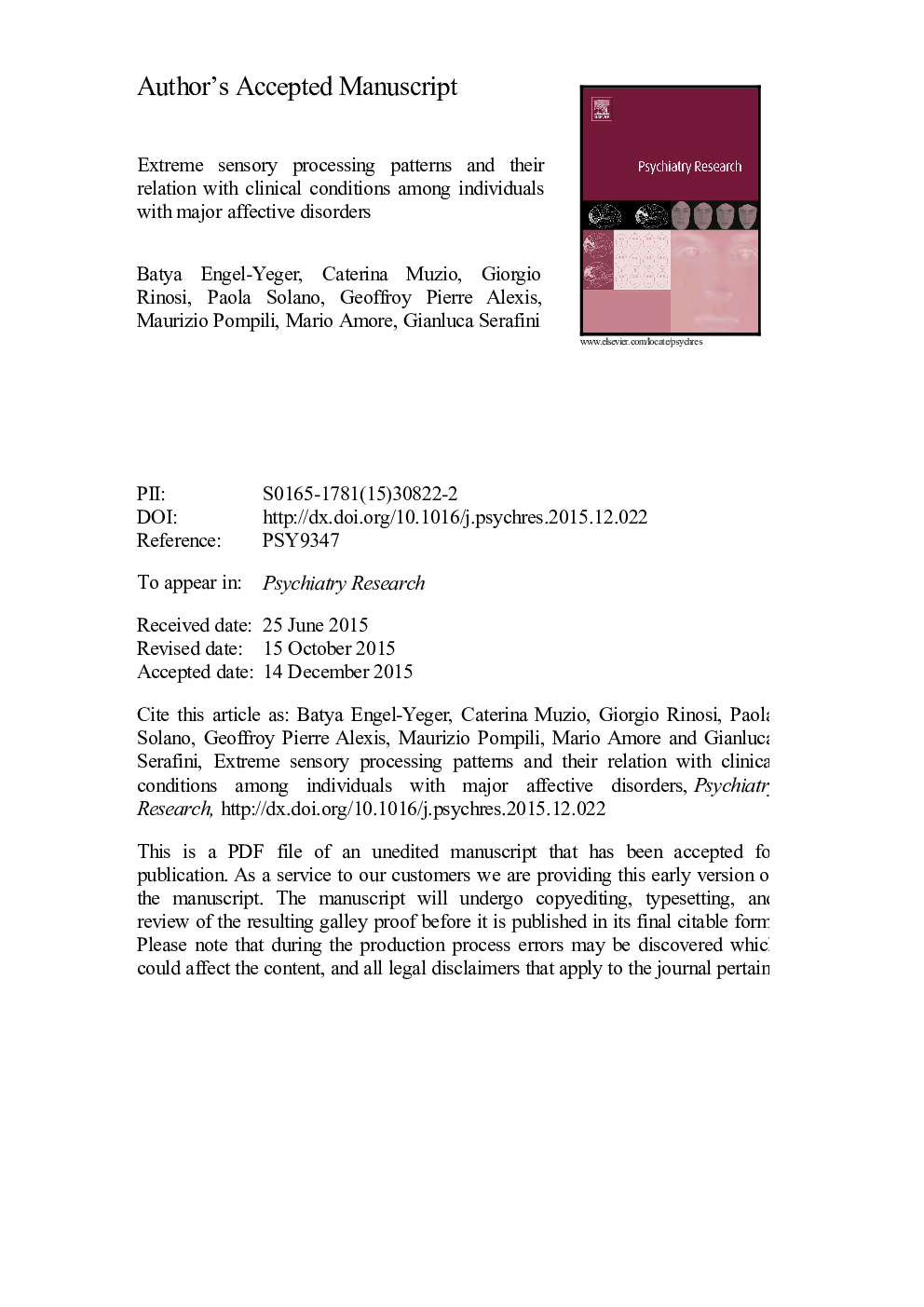| Article ID | Journal | Published Year | Pages | File Type |
|---|---|---|---|---|
| 6813653 | Psychiatry Research | 2016 | 28 Pages |
Abstract
Previous studies highlighted the involvement of sensory perception in emotional processes. However, the role of extreme sensory processing patterns expressed in hyper- or hyposensitivity was not thoroughly considered. The present study, in real life conditions, examined the unique sensory processing patterns of individuals with major affective disorders and their relationship with psychiatric symptomatology. The sample consisted of 105 participants with major affective conditions ranging in age from 20 to 84 years (mean=56.7±14.6). All participants completed the Temperament Evaluation of Memphis, Pisa, Paris and San Diego (TEMPS-A), the second version of the Beck Depression Inventory (BDI-II), and Adolescent/Adult Sensory Profile (AASP). Sensory sensitivity/avoiding hypersensitivity patterns and low registration (a hyposensitivity pattern) were prevalent among our sample as compared to normative data. About seventy percent of the sample showed lower seeking tendency. Stepwise regression analyses revealed that depression and anxious/cyclothymic affective temperaments were predicted by sensory sensory/avoiding. Anxious and irritable affective temperaments were predicted by low registration. Hyperthymic affective temperament and lower severity of depression were predicted by sensation seeking. Hyposensitivity or hypersensitivity may be “trait” markers of individuals with major affective disorders. Interventions should refer to the individual unique sensory profiles and their behavioral and functional impact in the context of real life.
Related Topics
Life Sciences
Neuroscience
Biological Psychiatry
Authors
Batya Engel-Yeger, Caterina Muzio, Giorgio Rinosi, Paola Solano, Pierre Alexis Geoffroy, Maurizio Pompili, Mario Amore, Gianluca Serafini,
